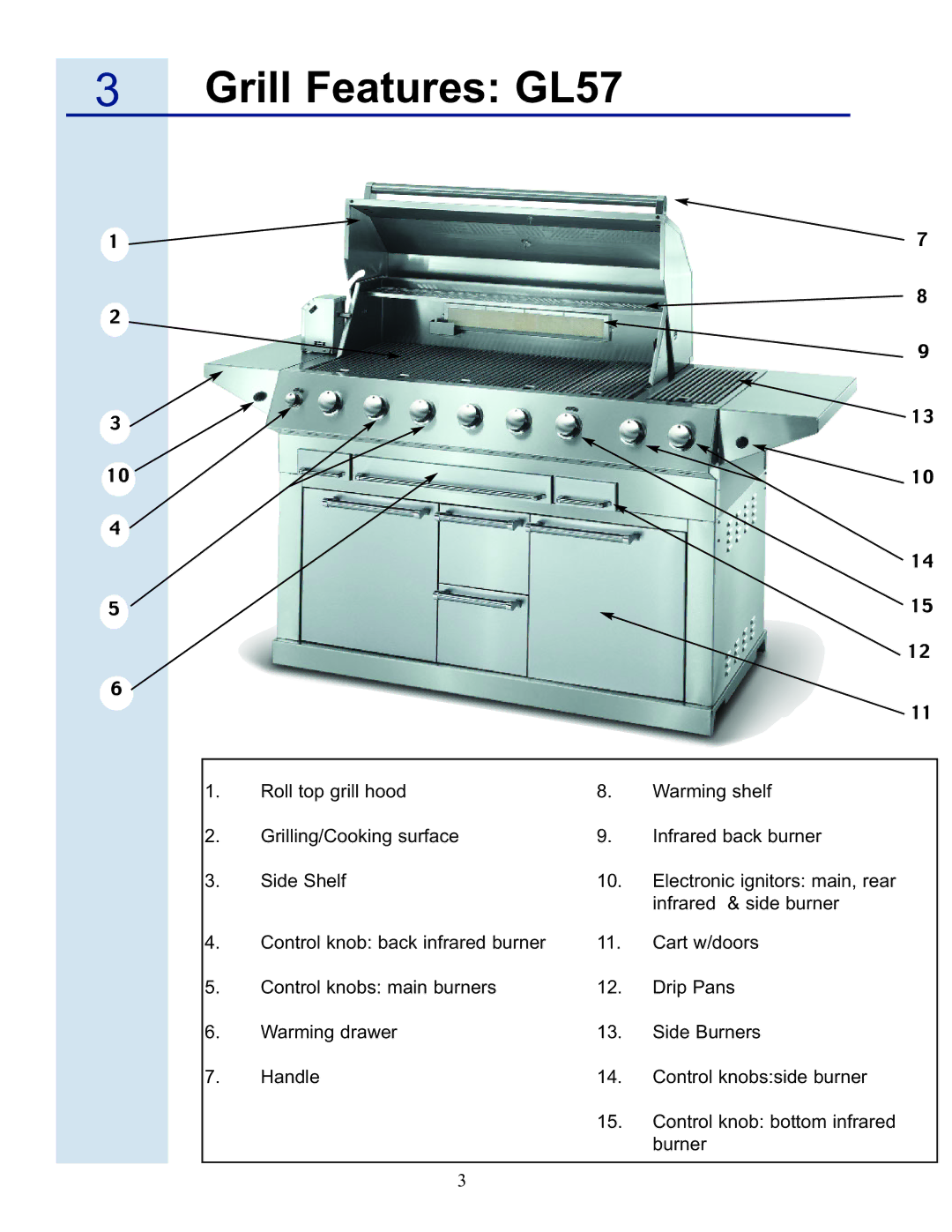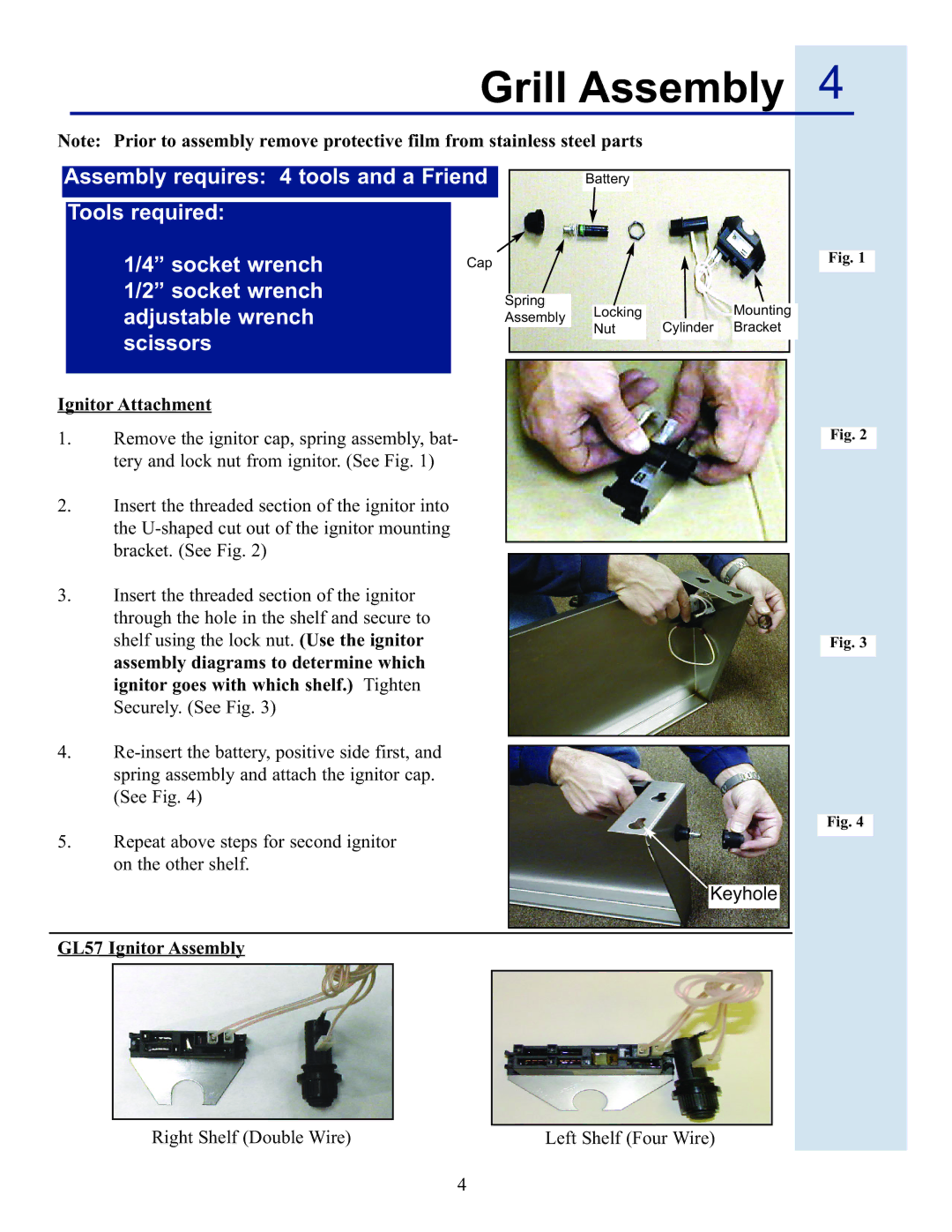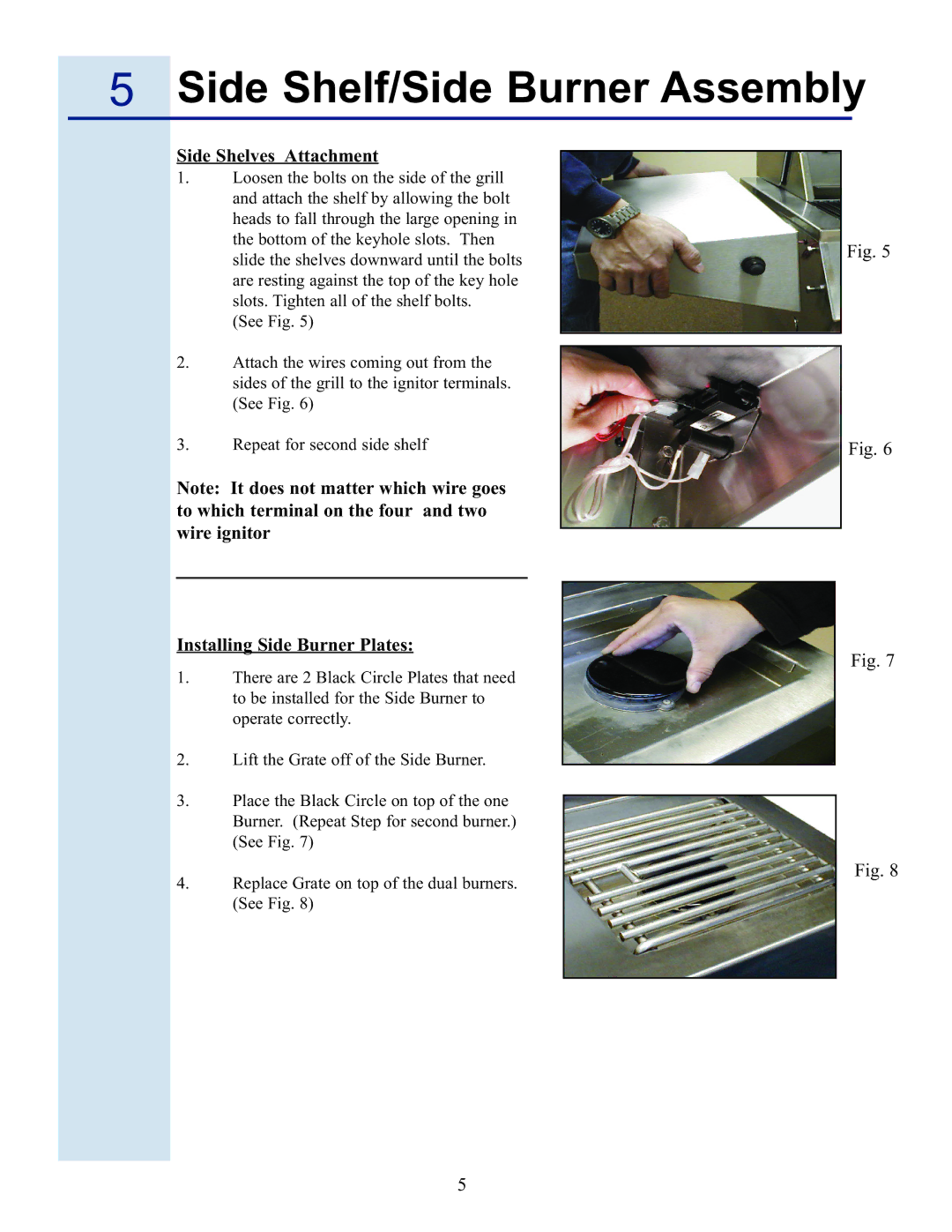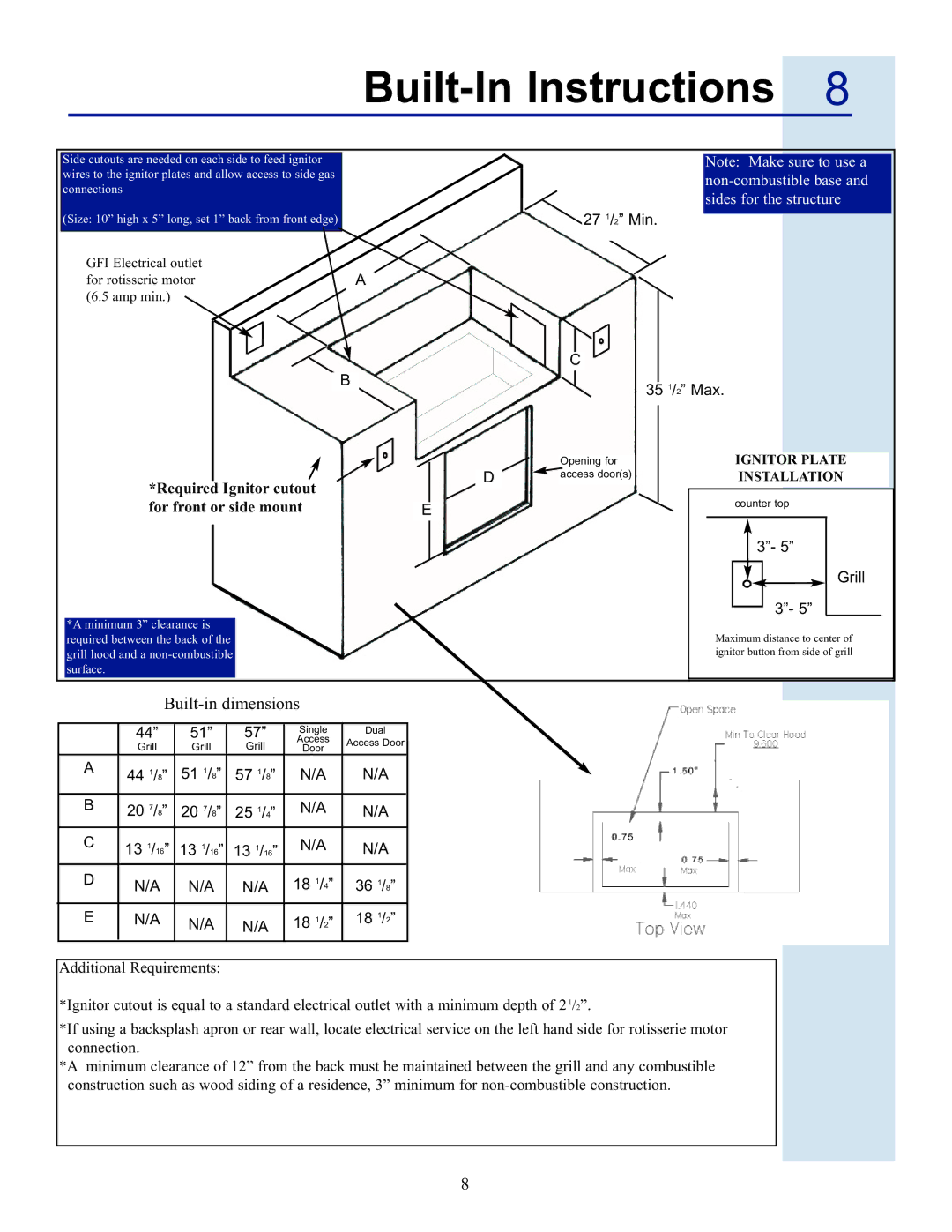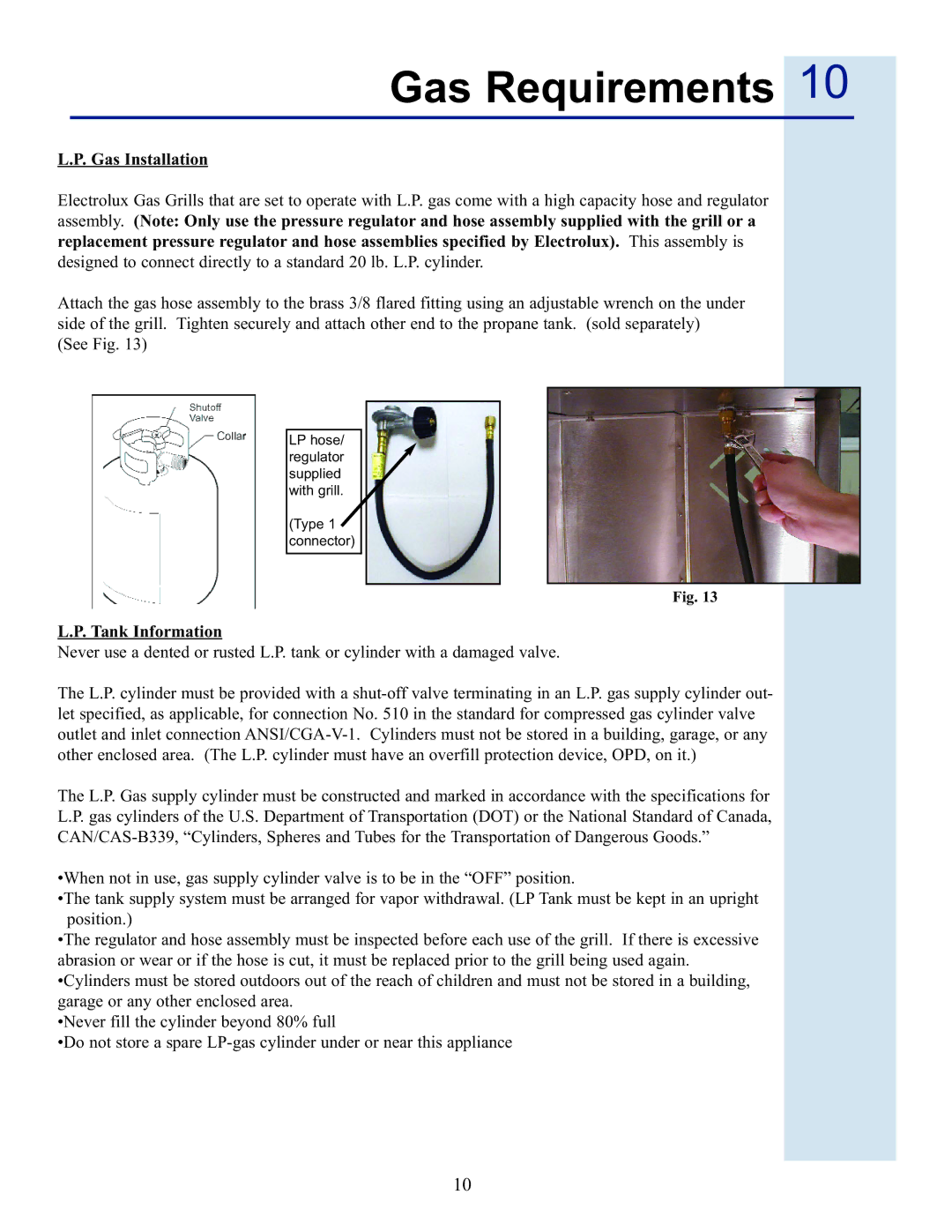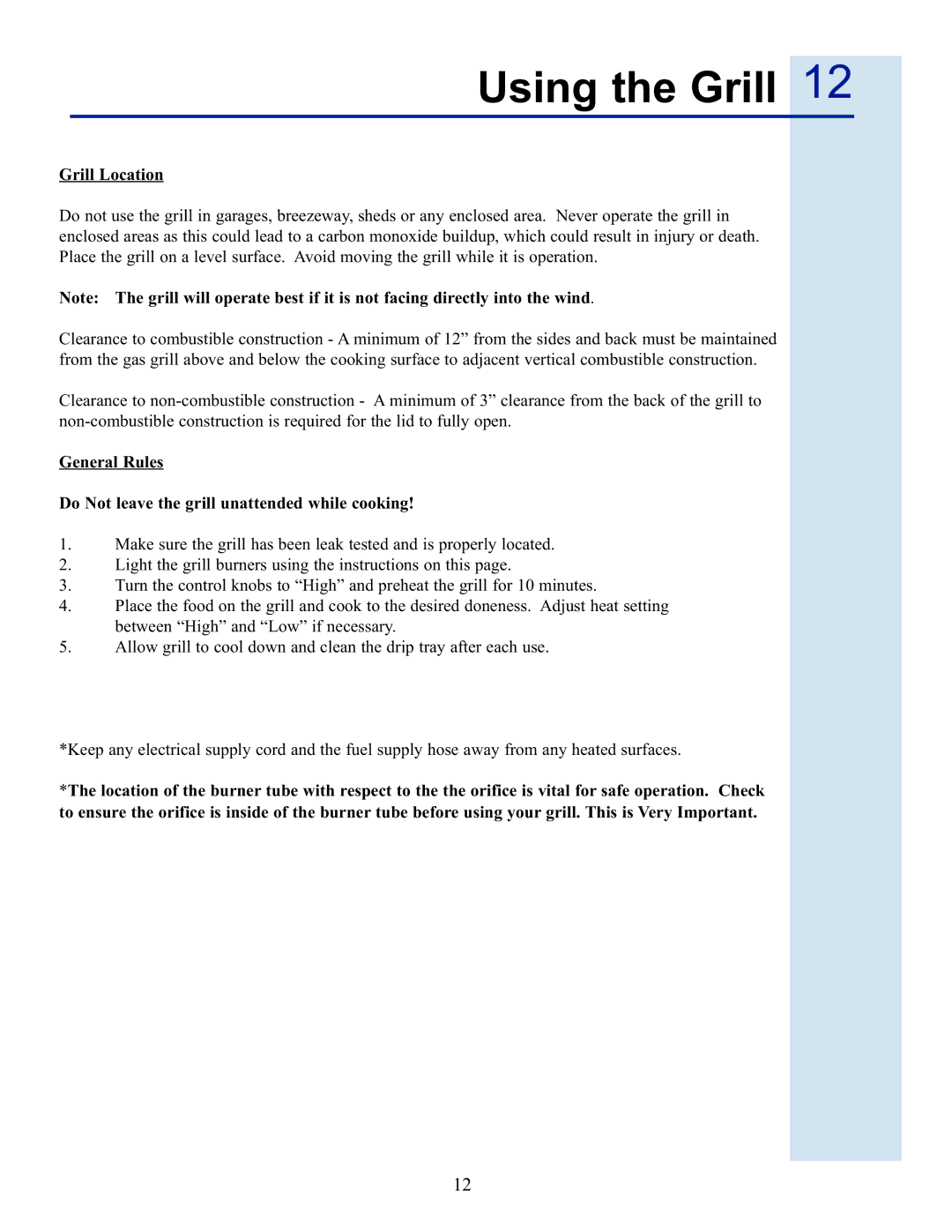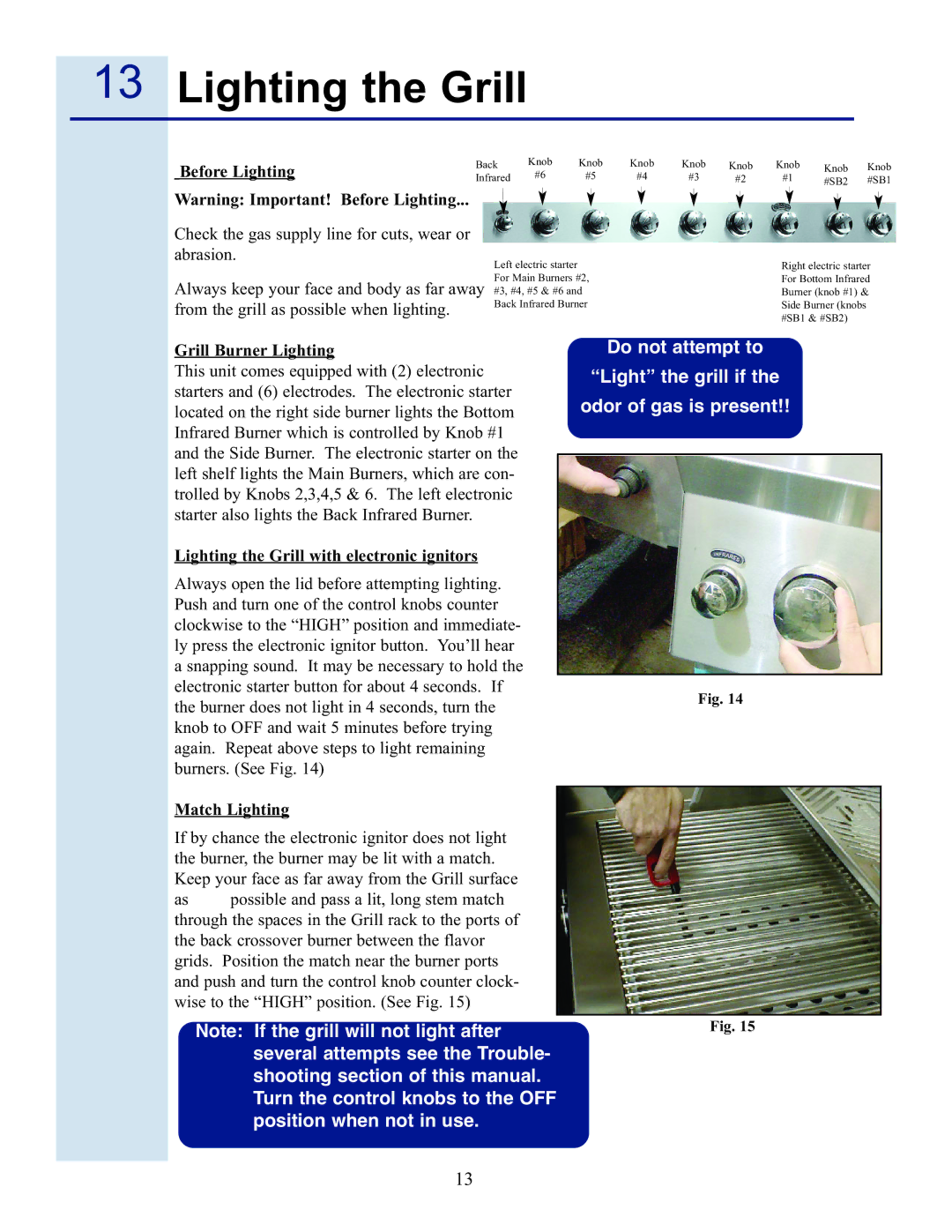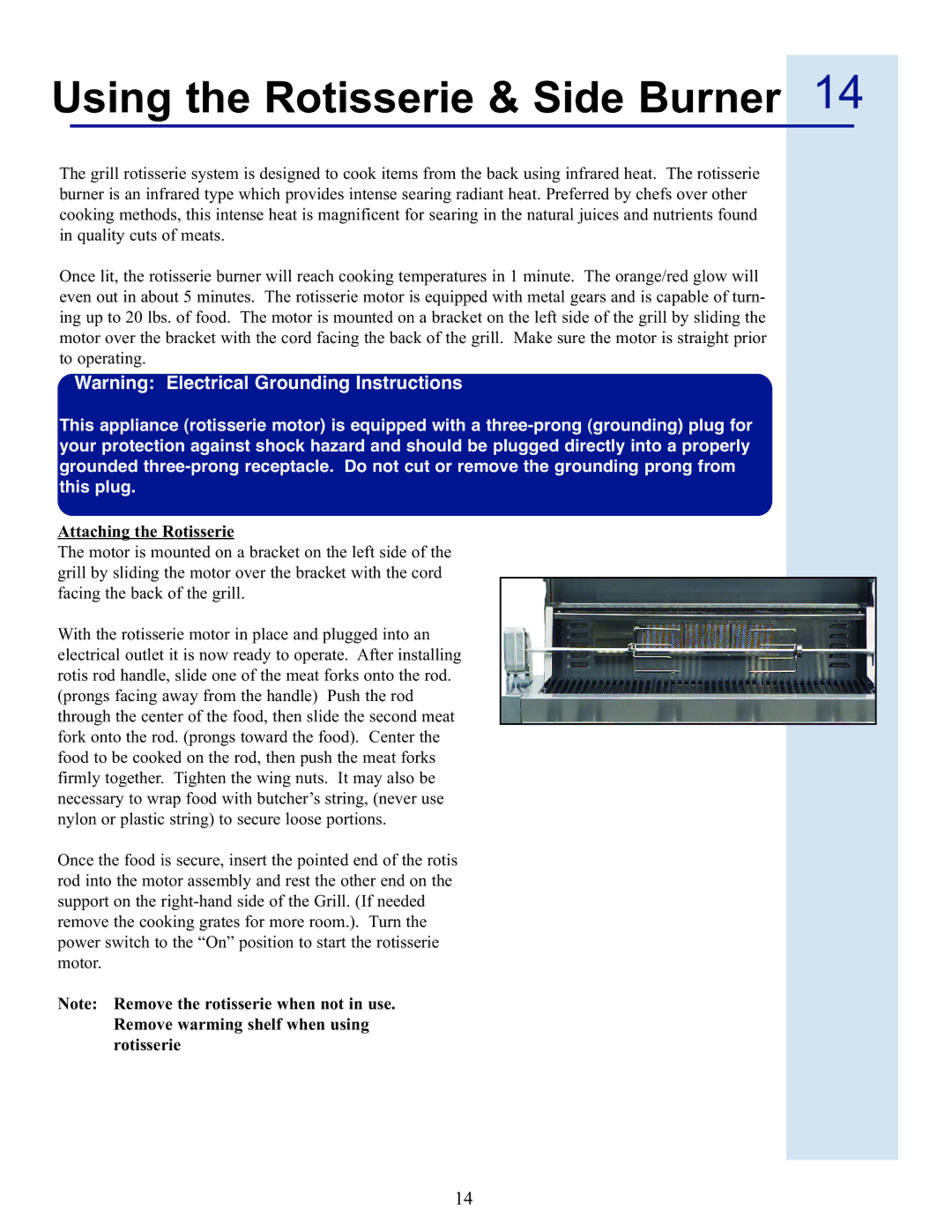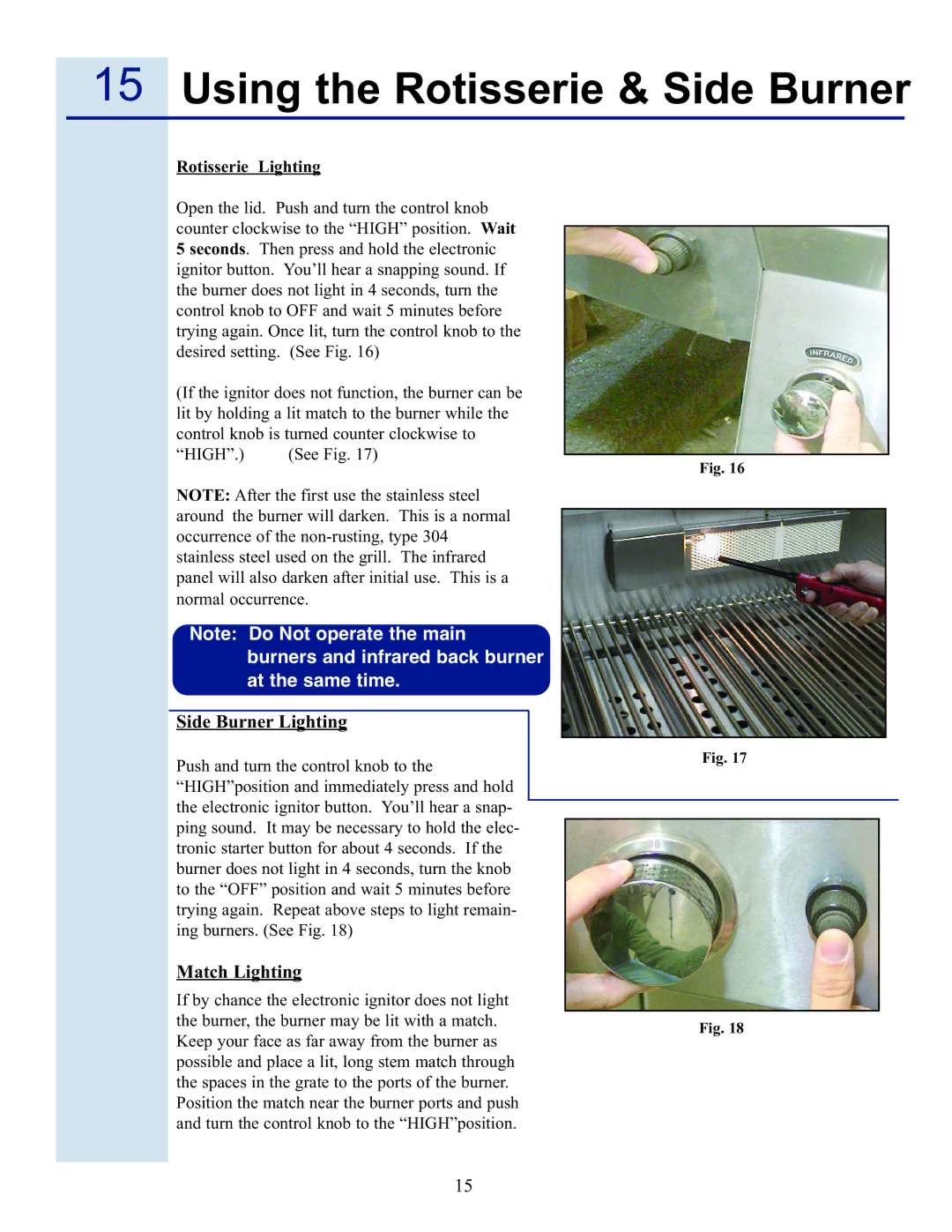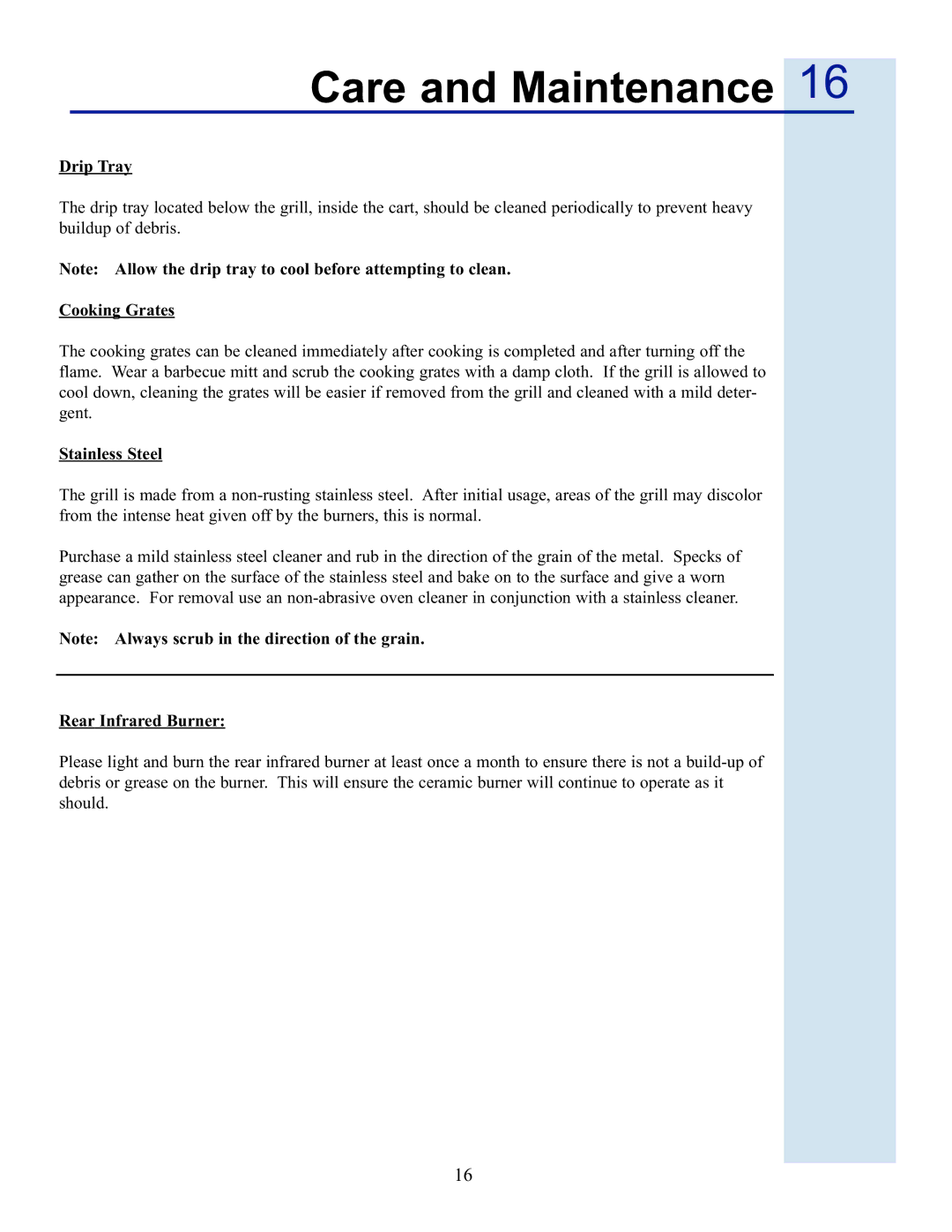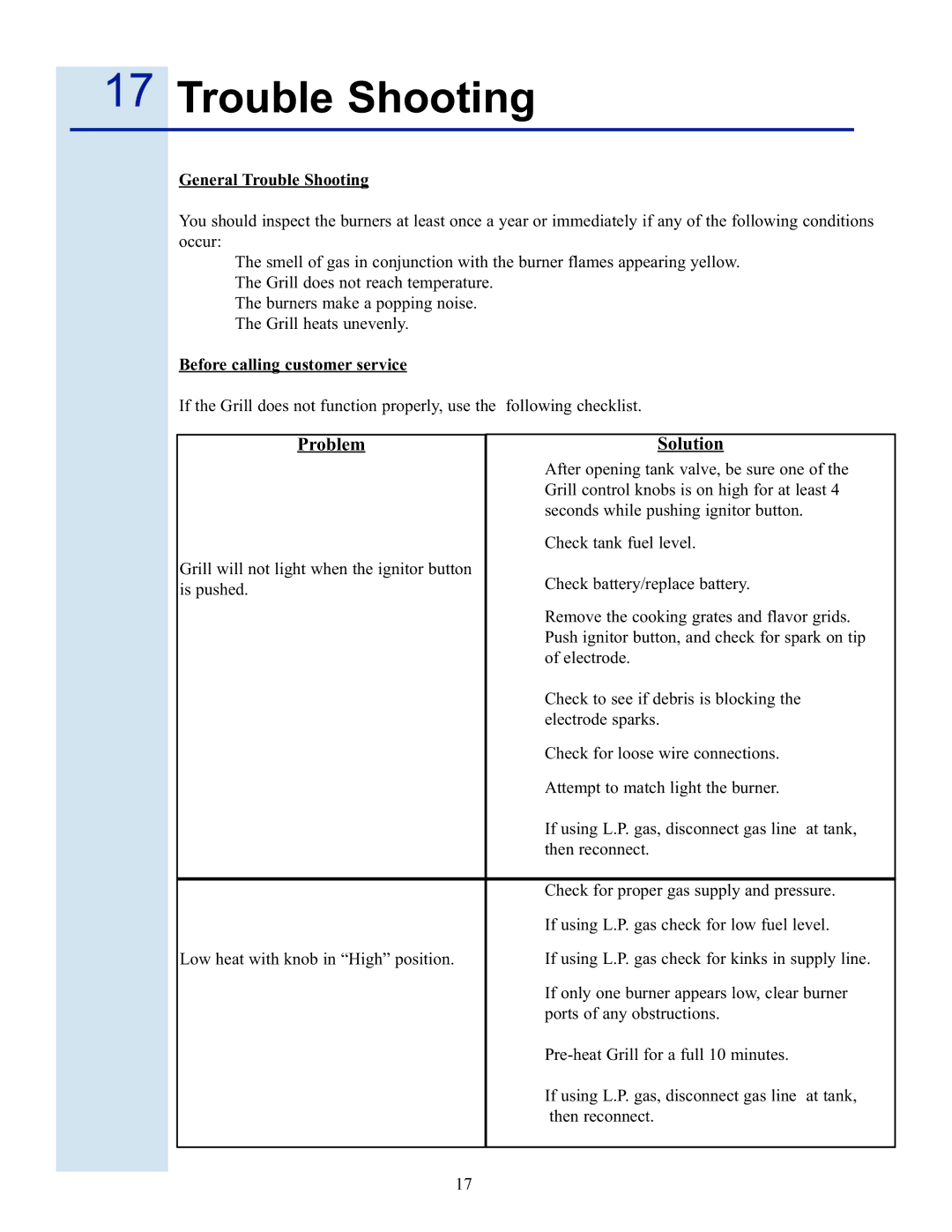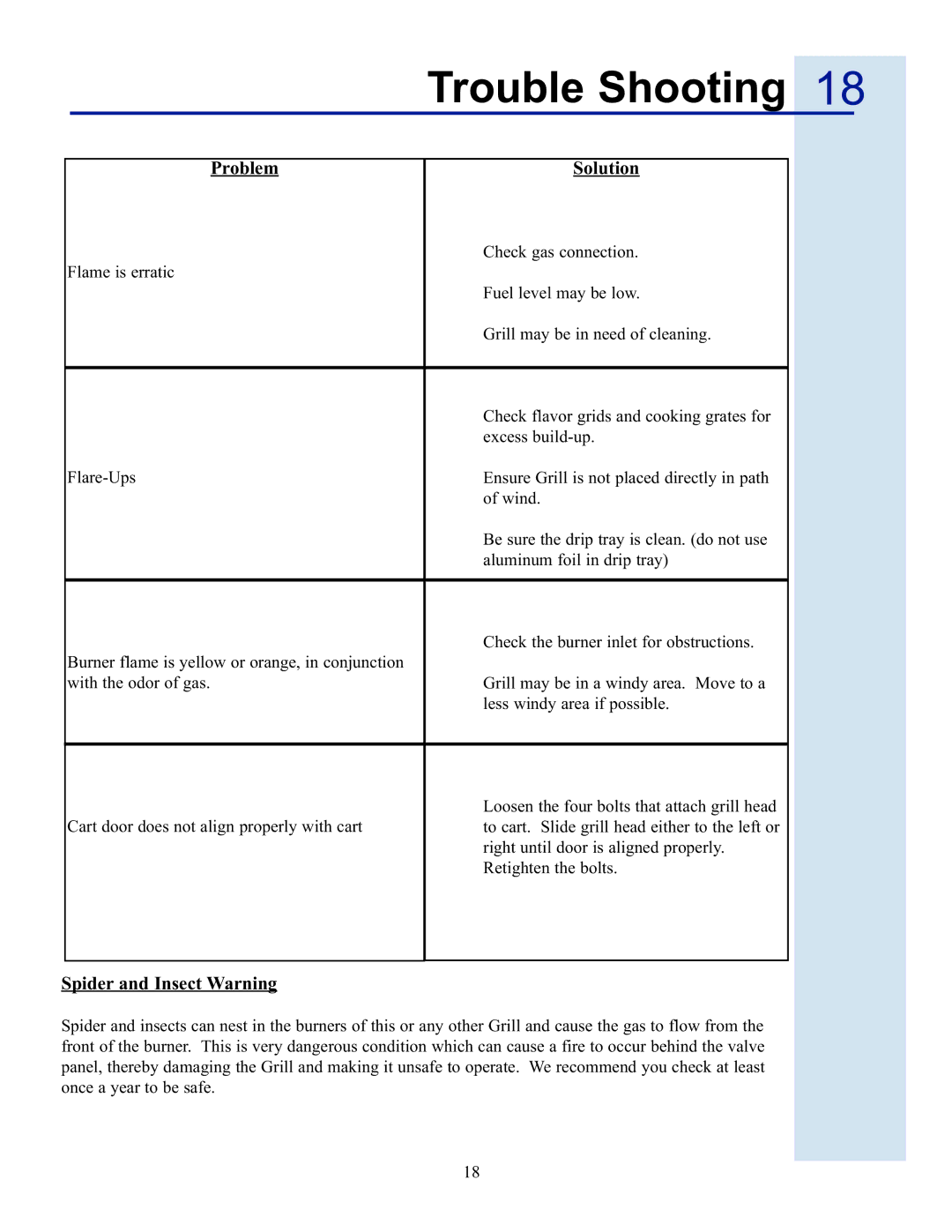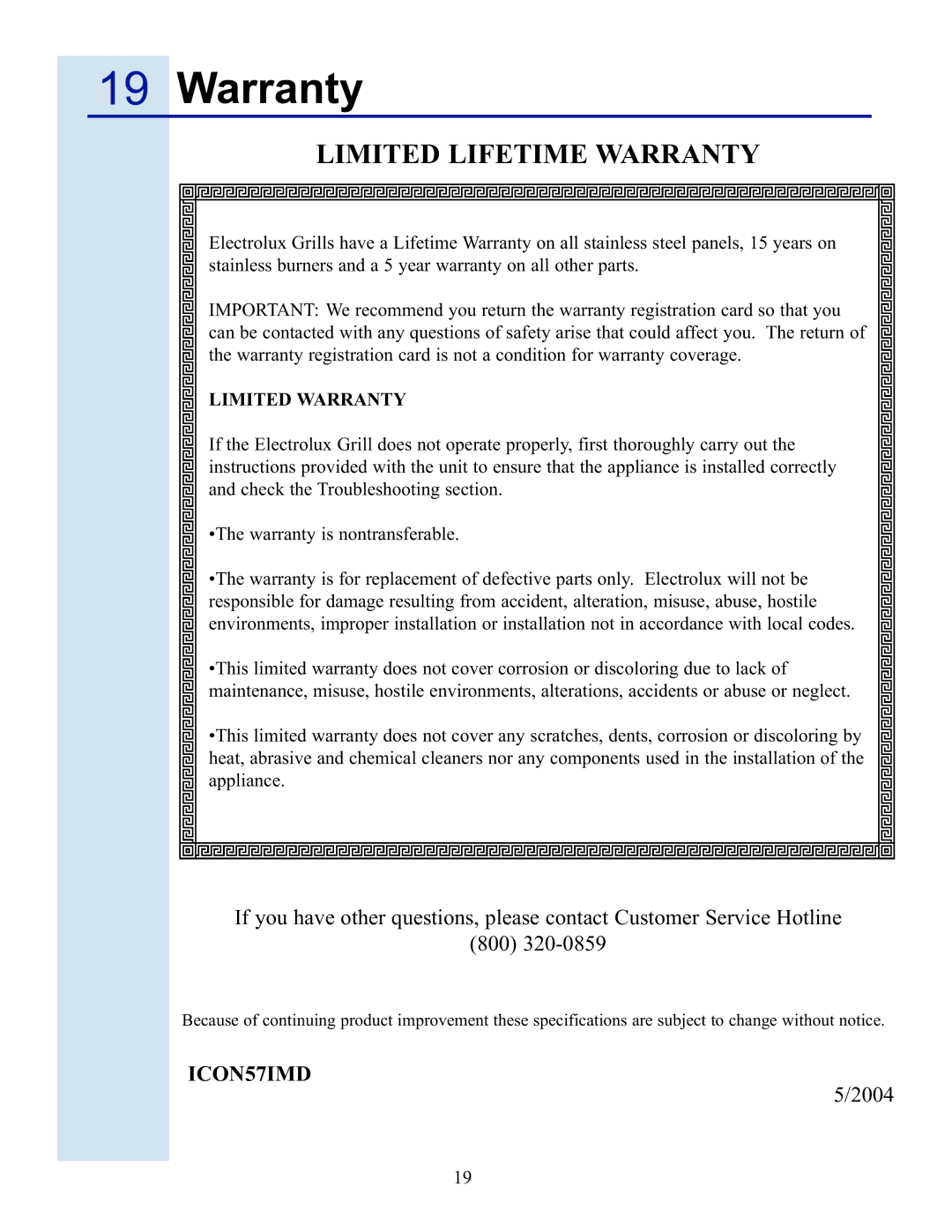
9Gas Requirements
General Information
Verify the type of gas supply to be used, either Natural Gas (NG) or Liquid Propane (L.P)., and make sure the marking plate (located on the back of the unit) agrees with that of the supply.
Note: Never attach an unregulated gas line to the appliance.
For Natural Gas installations, an installer must supply a gas shutoff valve that is easily accessible to the grill. All installer supplied parts must conform to local codes, or in the absence of local codes, with the National Electrical Code, ANSI/NFPA
All pipe sealants must be an approved type and resistant to the actions of L.P. gases. Never use pipe sealant on flare fittings. All gas connections should be made by a competent technician and in accor- dance with local codes and ordinances. In the absence of local codes, the installation must comply with the National Fuel Gas Code, ANSI
This appliance and its individual shut off valve must be disconnected from the gas supply piping sys- tem during any pressure testing of that system at test pressures in excess of 1/2 PSIG (3.5 kPa.).
This appliance must be isolated from the gas supply piping system by closing its individual manual
The installation of this appliance must conform with local codes, or in the absence of local codes , with National Fuel Code, ANSI
Installation in Canada must be in accordance with the Standard
Natural Gas Installation
The gas inlet supply pressure should be between 5” and 14” w.c. A step down regulator is required if the line pressure is in excess of 14” w.c.
Check your local gas utility company or with local codes for instructions on installing gas supply lines. Be sure to check on type and size of run, and how deep to bury the line. If the gas supply line is too small, the grill will not operate correctly.
Any joint sealant used must be an approved type and be resistant to the actions of L.P. gases.
Place the installer supplied
9



